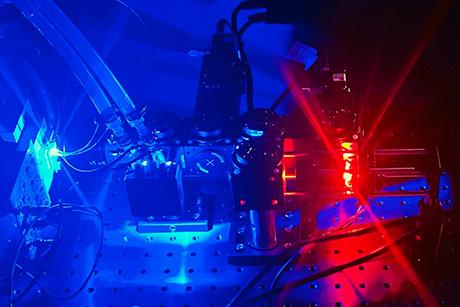2.500: Desalination
A delicate balance of efficiency and cost.
Desalination – the process of removing salt and other contaminants from water for human consumption – provides almost 90 billion liters of water per day worldwide. And though large-scale desalination technology has been in development since the 1800s, questions regarding energy and cost efficiencies still abound. Yet only a handful of courses are being taught around the world – and very few in the US – to prepare engineers to address these shortcomings.
With roughly 7.6 billion people in the world today, the global population has increased by almost 200% since 1927, and another 2 billion increase is projected by 2050. But simultaneously, rainfall over land remains about the same year over year. In fact, rainfall could become more extreme with climate change, with more intense periods of rain at some times and intense droughts at others. We have increased demands on water but a stagnant and increasingly unstable supply.
“Over a period of a little more than 120 years,” explains John H. Lienhard V, the Abdul Latif Jameel Professor of Water and director of the Abdul Latif Jameel World Water and Food Security Lab (J-WAFS), “the world population will have gone up by a factor of five, which means 8 billion additional people being supplied from the same renewable source of fresh water: precipitation.
“When you get to the point where you’re using all of your available renewable water supply, you have water scarcity. And at that point, water recycling and water conservation become very important. Desalination can help to provide resilience in the water supply and help to meet some of the base demand.”
It’s for this reason that, in 2008, Professor Lienhard created class 2.500: Desalination. With the help of Miriam Balaban, who founded the journal Desalination and edited it for more than 40 years, and who has long served as the general secretary of the European Desalination Association, Professor Lienhard built the class’s framework and teaching materials from scratch.
2.500, which is offered to graduate students studying mechanical engineering, chemical engineering, civil engineering, and materials science, covers everything from the basic chemistry of seawater and groundwater, to what makes water unsafe to drink, from the thermodynamics of electrolytes to the Gibbs energy changes in separating freshwater from saltwater. Professor Lienhard is particularly focused on teaching students how to understand the separation process in a given technology and what makes each of them more or less energy efficient.
That, he says, is where there is a major opportunity for improvement in desalination systems. For example, a well designed thermodynamic power cycle might run at a 60% exergetic efficiency, while a well designed desalination system typical reaches 20-30% exergetic efficiency at best, and often much less. But many of the potential solutions for improving energy efficiency, such as enlarging a surface area for heat exchange, also increase the total cost of the system. Suddenly you’ve got an energy-efficient device that’s not at all cost effective. The issues of cost are particularly challenging in impoverished areas such as parts of India, where the need is dire but the ability to pay is low.
In the US, recent events, such as drought in California, infrastructural failures in Flint, Michigan, and arsenic in New England well water, have revealed that concerns about water aren’t just for developing countries. In fact, in Carlsbad, California, the largest reverse-osmosis desalination plant in the Western hemisphere recently came online, providing water to San Diego County.
“The students who take this class,” says Professor Lienhard, “are very motivated by a desire to help address the world’s biggest challenges. They want to make a difference, and they come into the class eager to learn the tools that will allow them to go out and be useful in the world.”
Not a moment too soon.


